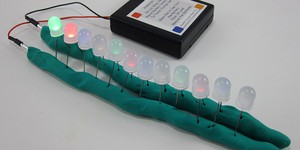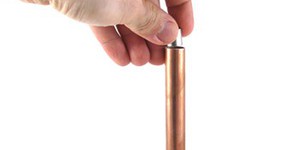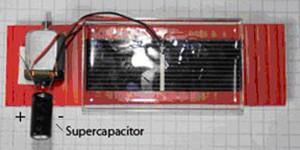Third Grade, Electricity & Electronics Science Projects (12 results)
Stop for a minute and try to imagine your world without electrical power and electronic gadgets.
No convenient appliances in the kitchen, no electric lights. No computers, MP3 players, television, or video games.
Your life would be completely different, wouldn't it? Electricity and electronics are so central to modern life that, paradoxically, they're easy to overlook.
|
Select a resource
Coding Projects
Sort by
|
You may be familiar with permanent magnets—the kind that hang on a refrigerator. But did you know that other magnets, called electromagnets, can be turned on and off? When turned on, electromagnets act just like permanent magnets, but if you turn them off, their magnetic properties disappear. Electromagnets are an important part of many electronic devices, like motors, loudspeakers, and hard drives. You can create an electromagnet with a simple coil of wire and a battery. In this project,…
Read more
"Paper circuits" are a fun way to mix electronics and art by adding lights directly to a painting or drawing. These lights need a battery to power them, and typically you would use wires to connect them. In paper circuits, though, many materials can be substituted as "wire," including special types of paint, ink, and even aluminum foil. There are also different options for what type of battery you can use. Which materials do you think will work best? Try this project to find out!
Read more
New
Have you ever seen a waiter balance an entire tray of drinks without spilling any? How do they do it? Do you think you could build a robot waiter that can do the same thing? In this project, you will learn how to build a self-balancing robotic tray. You can incorporate the auto-leveling tray into one of our many other robotics projects, like the Bluebot or robotic arm.
Read more
What do you do with your old wooden pencils when they get too short to hold? Don't throw them away; you can use them to make circuits! This project will show you how to use pencils to make resistors, an important part of many electrical circuits, and test how they affect the brightness of a lightbulb in a simple circuit.
Read more
How do you make a spacecraft land safely on the Moon or another planet like Mars? It probably helps to know how far away the ground is so you can deploy landing gear, activate a parachute, or fire thrusters to help slow down. In this project you will build your own "lander" vehicle with a sensor that can measure distance to the ground, allowing you to program outputs like blinking lights or an audible alarm.
Read more
Have you tried our first electric play dough project,
and now you are looking for more to do? Do you want to learn more about circuits and add even more lights? Check out this project for part 2 of our play dough circuits series!
Read more
New
Are you ever annoyed by a poor Wi-Fi signal? What about when you try to send a text message, and it just won't go through because of poor cell service? Have you ever wondered what factors affect the strength of your signal and the speed of the connection? If so, this project is for you!
Read more
Have you tried our first and second play dough circuits projects? Are you a master circuit artist, ready to try something even bigger and better? Try this project to see if you can build a three-dimensional light-up sculpture.
Read more
Dimmer switches let us control the brightness of a light, anywhere from completely off to full brightness. This can be nice when you want to set the brightness "just right," as opposed to a regular light switch that only lets you turn a light on or off. It turns out that you can make a dimmer switch out of an everyday object—a pencil! Try this project to find out how a dimmer switch can control the brightness of a light.
Read more
When your parents were kids, they probably wore polyester. Static cling was a major household issue! Now everybody wears cotton, which does not get static cling nearly as much. Why are some materials more susceptible to static cling than others? Investigate how well different materials produce static electricity by making a homemade electroscope and testing it out in this science project.
Read more
Did you know that not all trains run on tracks? Some of the world's fastest trains are magnetic levitation trains (maglev). This means that the carriage of the train is suspended over the rails with no support, but only with magnetic fields! There is a physical explanation for magnetic levitation, and if you would like to learn more about magnetism and current, this is a science fair project that you must try!
Read more
Solar cells are devices that can be used as a source of power when there is light shining on them, but they stop producing energy when they are not in the light. One way to store the solar energy for later use is to use a solar cell to charge something called a capacitor. The capacitor stores the energy as an electric field, which can be tapped into at any time, in or out of light. In this electronics science project, you will use parts of a solar car to experiment with the energy storage…
Read more
|


















